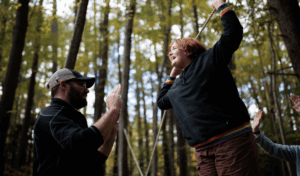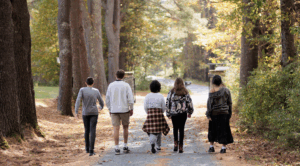In my travels across the country, meeting with clinical and educational professionals, we frequently discuss the topic of when residential treatment is indicated and the process of bringing families – and teens – on board with the idea of going to a residential program. While in many cases the need is painfully clear, describing the benefits of what a residential placement option can provide, over and above an intensive out-patient program, putting it all into terms that resonate is important for gaining buy-in from skeptical kids and families.
When someone’s fear and avoidance or obsessive thoughts and behaviors get to a place where they get “stuck” in their out-patient work – or cannot get to their appointments, it’s time to think about a residential placement. Residential treatment is designed to break the cycle of dysfunction and disability and create momentum in an otherwise stagnate situation. Resuming more adaptive daily functioning in a therapeutic, supportive and expert environment will lead to positive change. Residential treatment, and the clinical and experiential programming that is part of it, not only provides the opportunity for intense treatment and daily living skills, but also provides a much needed social milieu and group interactions that are essential for growth and overcoming specific anxiety disorders such as social anxiety.
When it is determined that a residential placement is needed, a program with a structure and model that supports the consistent delivery of Cognitive Behavioral Therapy-based Exposure and Response Prevention (ERP) is the standard. A comprehensive and specialized anxiety treatment program that utilizes ERP would typically include:
1. A population (milieu) of clients with anxiety and OCD as the primary disorder. Many quality treatment programs say they treat anxiety – which they do, but have a mix of client presentations and co-occurring disorders such as substance abuse, attachment disorders, and personality disorders.
2. A model of gradual exposure work – imaginary, followed by interoceptive, followed by in-vivo practice.
3. Intra and Inter-session exposure work with a trained therapist or specialist, and opportunities to “rehearse” confronting fears in real world (”in vivo”) situations.
4. Multiple and extended ERP Groups weekly where clients will receive education about ERP and participate in exposure activities.
5. Individual and cohort work on exposure scenarios where clients can develop an exposure plan for similar fears.
6. Data collection during the exposure assignments that includes cumulative rating of the anxiety (scale of 1-10), documenting and communicating thoughts, describing physical sensations, and acknowledging safety behaviors.
7. Exposure work supplemented by weekly individual and family therapy.
While a residential program that specializes in anxiety with a strong clinical component is paramount, the programmatic structure of a residential program should also be fun and include an environment to support exposure therapy. Opportunities for experiential and recreational activities to develop skills and explore passions will make the overall experience more enjoyable and offer opportunities for organic and “accidental” exposure work. Ideally, the program should include other evidenced-based elements to help with anxiety such as mindfulness activities like yoga, nutrition education and healthy meals, fitness and outdoor activities.
Don Vardell Jr., Executive Director
For more information about residential treatment, Mountain Valley Treatment Center, or to discuss whether residential treatment is appropriate for a client with whom you are working, contact Dr. Alex Young, PsyD., Director of Clinical Outreach at ayoung@mountainvalleytreatment.org.


